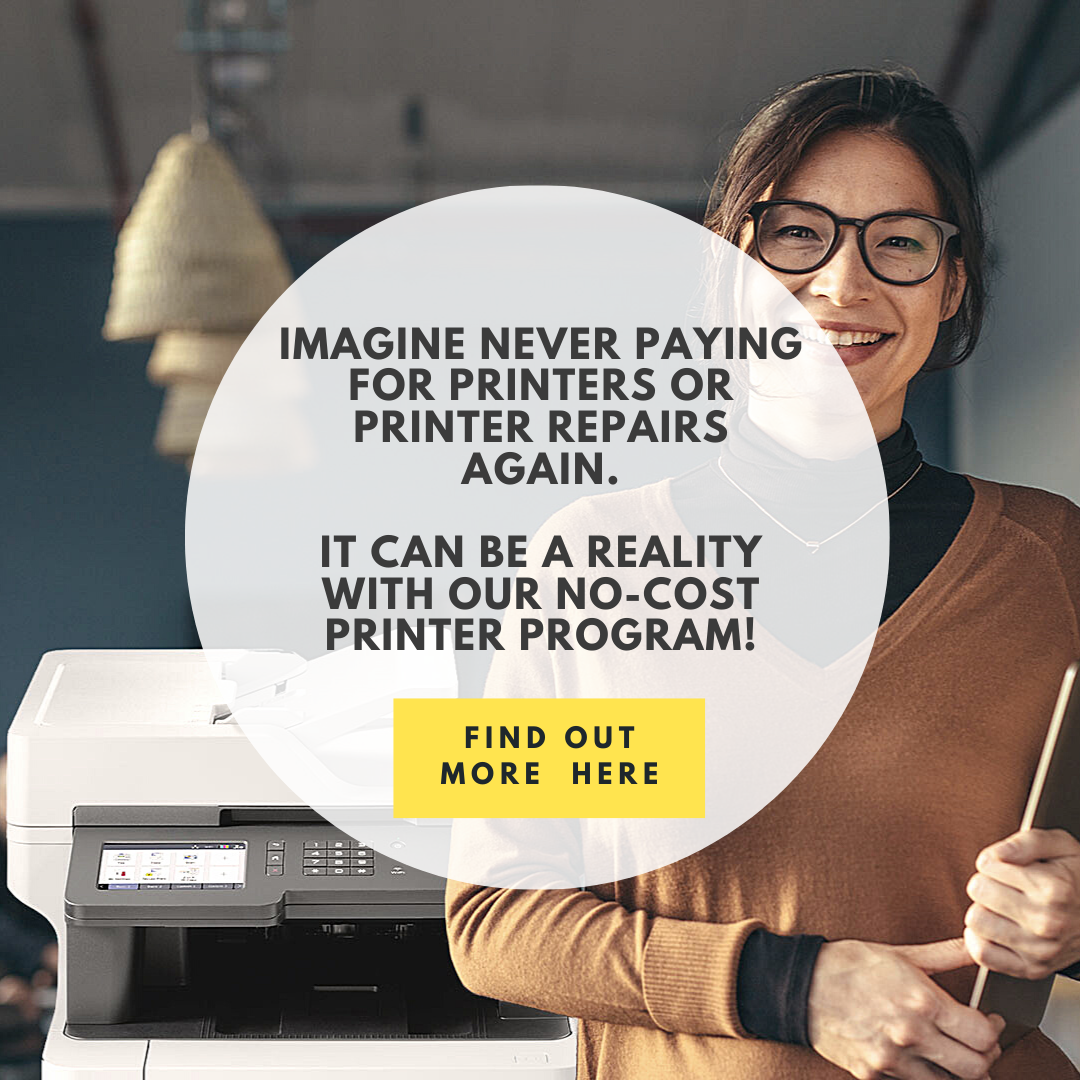Outside of jammed paper or cryptic alerts, the office printer may seem like one of the most vanilla objects in the office. It’s not as immersive as a laptop or as lifesaving as the coffee maker.
But your printer may be the most critical device in your office.
Why is that?
Printers are a high-security risk that can seriously compromise a business or expose the privacy of employees.
As an example, a few years ago, a bored teen was able to hack 150,000 printers with a few lines of code. More recently and part of an ongoing mass-trolling campaign, a hacker remotely took over 50, 000 printers simply to print out some posters about his favorite vlogger, PewDiePie.
Think what a criminal could do with such power?
Just as disturbing, the mentioned hacking incidents are not surprising or even uncommon. Forty-four percent of network-connected printers in companies are not secure when it comes to unauthorized access. Beyond porous company networks and the internet in general, it’s also not surprising that 90 percent of businesses have suffered a security breach in the last year caused by hard copy documents.
Put it bluntly: your printer could potentially be the reason sensitive information ends up in the wrong hands.
The good news is that you don’t have to be Neo from The Matrix to secure your printer from both cyber and physical threats. All it takes to achieve printer security is some sensible safety practices – which we’ve split into two categories for you: document security and cybersecurity.
Document security
Yes, hackers are out there gunning for your company – but the reality is that 32 percent of print security incidents are caused by internal users (not a shock when considering that 80 percent of business information exists in hard copy). You don’t want to be careless with your payroll figures, bank statements, financial reports, or employee records.
Here are some of the common ways documents become exposed (and how to reverse this):
Output Trays: I’m sure you’ve seen a stack of papers just sitting on a printer or copier tray, open to the world, the person printing them likely distracted or interrupted on their way to the printer.
If this idea keeps you up at night, consider newer devices that require a personalized keycode or ID badge to allow documents to print in any capacity. Another suggestion is to grant employees that handle sensitive documents, such as accountants, a dedicated printer.
Recycling bins: It’s terrific that more brands are embracing sustainability. However, that often means printed paper being discarded and exposed in recycling bins – and some of that content may be sensitive.
If this robs you of even more sleep, a policy enforcing shredding materials before going into the recycling bin can work well. This procedure can go beyond the printer area to shredding any documents in the office. Another helpful process is to purchase a locked recycling bin with a slot to ensure the only direction documents go is “in.”
Lack of office printing policy: Without boundaries, anything can go anywhere, right? This is the reason we’re big fans of an office printing policy (and even offer a complimentary one to download). Overall, they help companies control costs, reduce printer downtime, and improve an office’s green footprint.
An office printing policy can also create standards and track printing. Here are some examples you can add to your office printing policy to bolster security:
- Assign a specific printer to every employee for better tracking
- Create recycling or shredding standards (as mentioned above)
- Remind managers to update printer or antivirus software, as well as check firewalls (why exactly? See also below in our cybersecurity section)
- Strategically allocate printers in different locations, streamlining printing and avoiding congestion
Cybersecurity
We mentioned not having to be Neo to safeguard printer network security. You don’t even have to even be in The Matrix. In the “real world,” a well-implemented managed print service increases the security of your printers by tracking documents, monitoring printers, providing reliable printing data, and optimizing a printing environment. There are many kinds of manage print service providers out there — all unique and tailored to specific audiences — like ours that focuses on small-to-medium businesses and delivers monitoring and assessment services at no cost if you stock your printers with our toner. Do your homework to find the best possible fit for your organization.
Getting back to The Matrix (somewhat), work with your IT department or managed print services provider to implement these changes in your printer network:
- Use only connections that are encrypted when accessing your admin control panel
- Restrict your printer from the public internet
- Change the default password of your admin control panel webpage
Furthermore, if you haven’t already, boost your printer cybersecurity by implementing these initiatives:
- Software Updates – Regular updates must be installed as soon as available, to help defend against the latest viruses and malware.
- Antivirus Software – If kept up to date, a trustworthy antivirus program can help prevent most adware, spyware, worms, Trojan viruses, ransomware, and more.
- Firewalls – Unauthorized access to the system network is prevented when a firewall is up and running, while still allowing users to send outgoing communications.
Also, having an effective data backup and recovery system is valuable, especially in the event of a cyberattack. While we’re on the subject of storage, most printers possess a hard drive of sorts; so, if you’re replacing or discarding printers, remove the storage device first.
As the last suggestion, simply turn your printers off at the end of the day or before a holiday. Hackers can’t send Pewdie Pie graphics if there’s no electricity in the printer. Maybe Neo could…
In the end, be aware
The typical workday can be hectic, with human traffic in and out of the printer area and digital traffic in and out of the printer itself. With a good managed print services provider, a robust office printing policy, and your tech people implementing sound cybersecurity steps, your printers can be safe both in the “real world” and The Matrix. That’s mean your business and employees will be safe too.
Mind you, don’t think that because you’re not a large business or corporation hackers or careless employees won’t happen. A 2019 Global Print Security Landscape Report revealed that small to medium-sized businesses are becoming increasingly concerned about print security. They should be concerned. Cyberattacks last year cost small-to-medium businesses an average of more than $2.2 million.
As Neo famously said in The Matrix, “Whoa!”
Need help securing your printer and optimizing your printing? As mentioned, we provide managed print services for any business or budget. And please download our new ebook!







